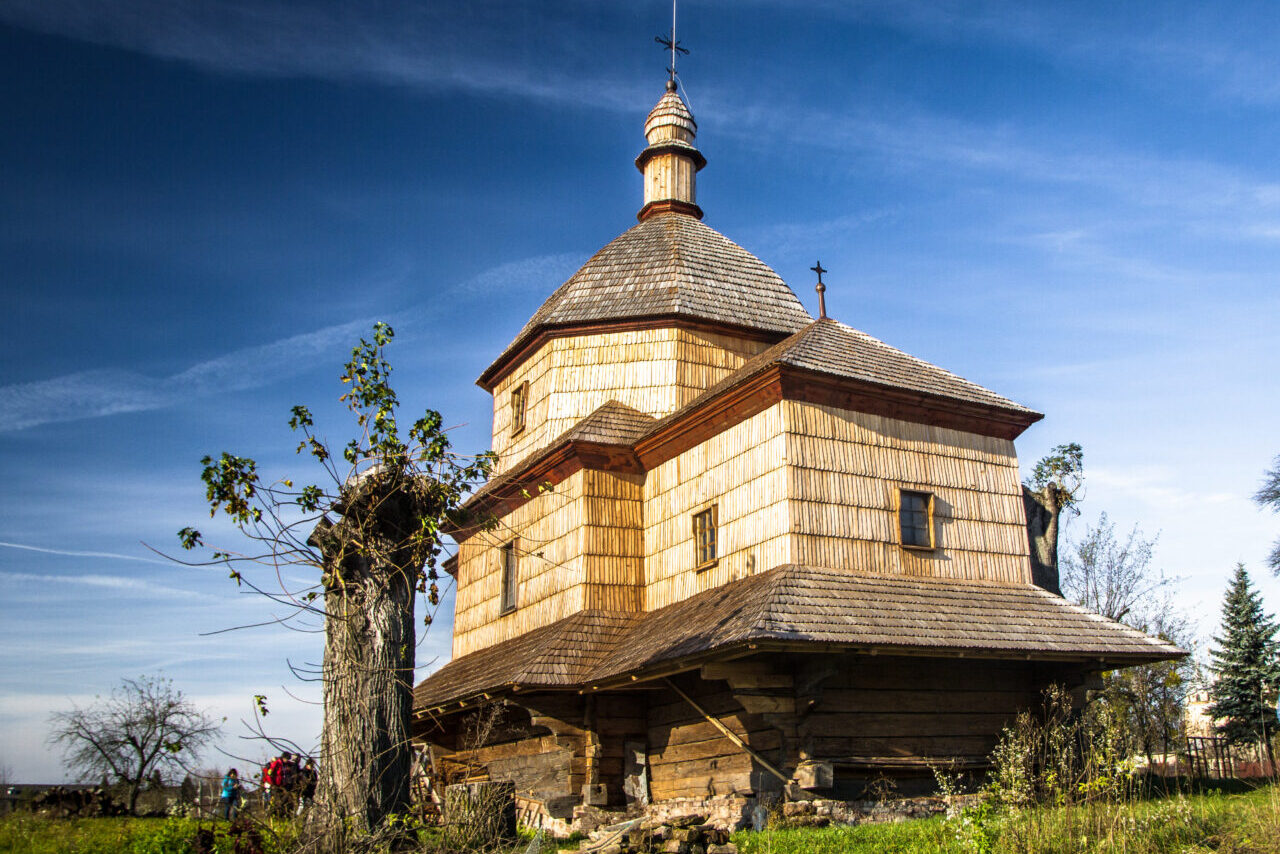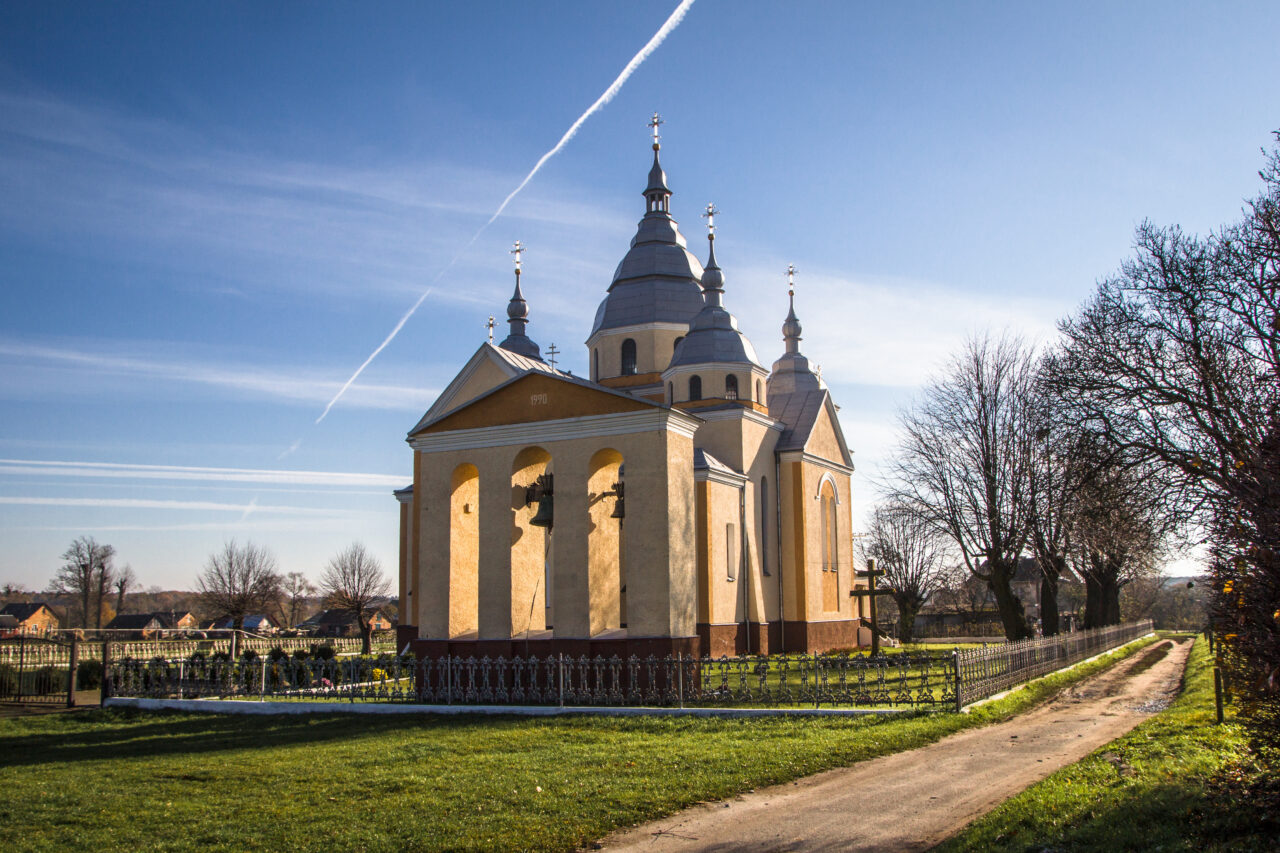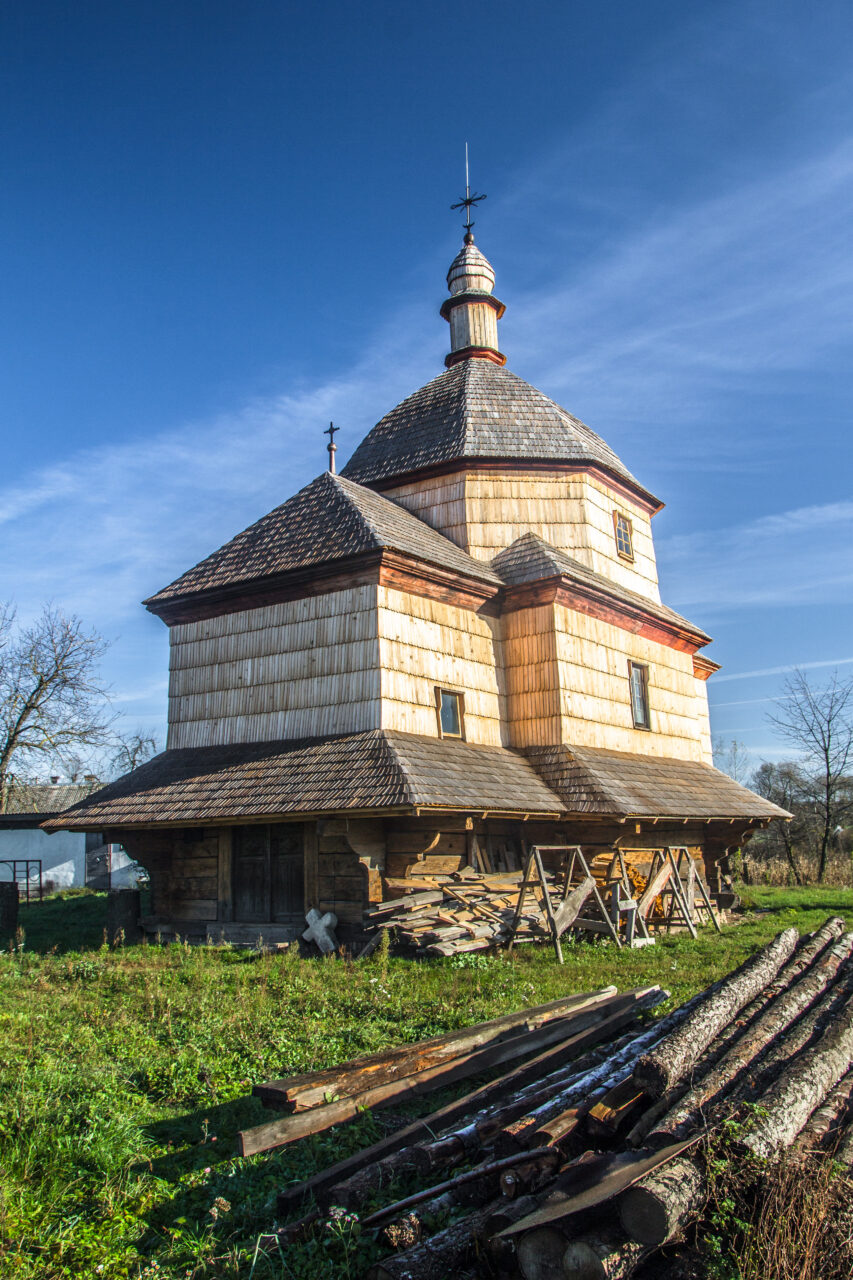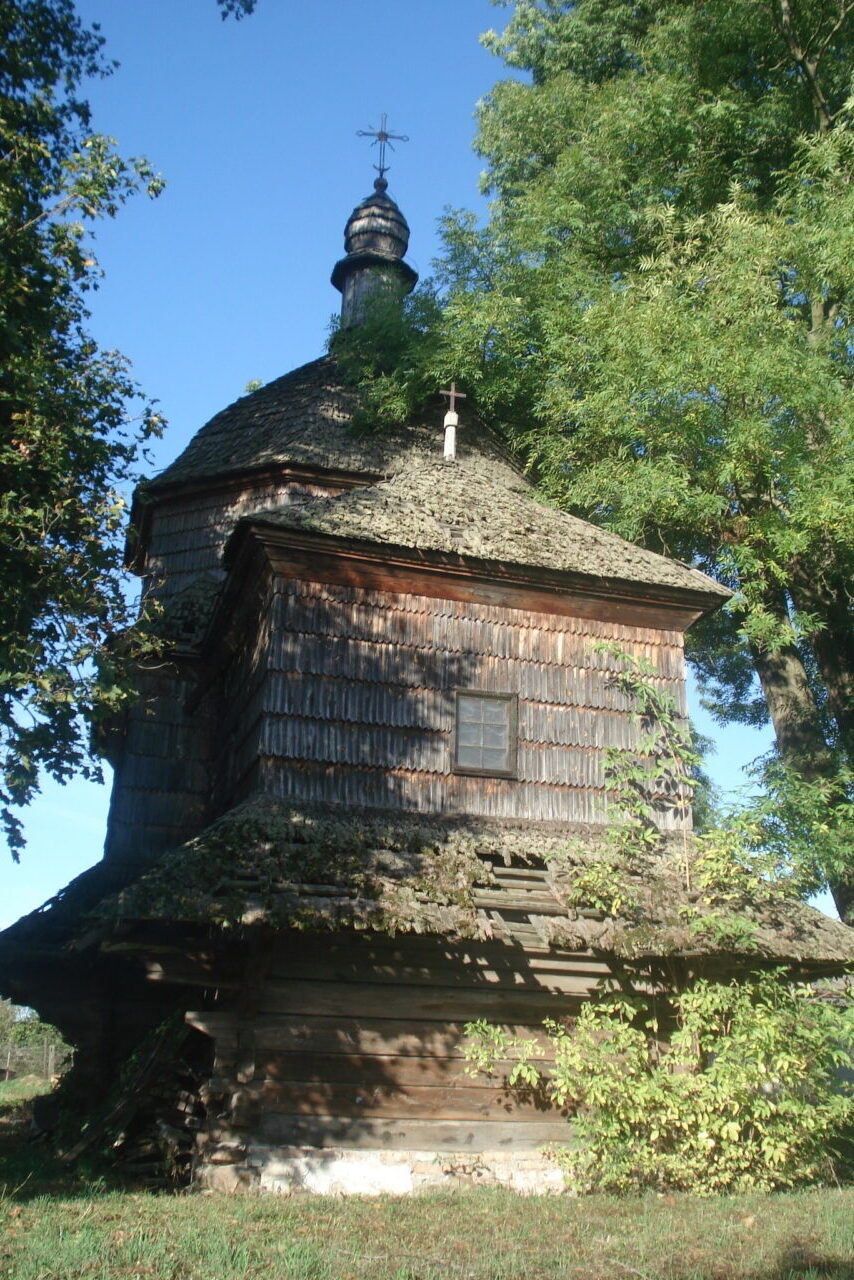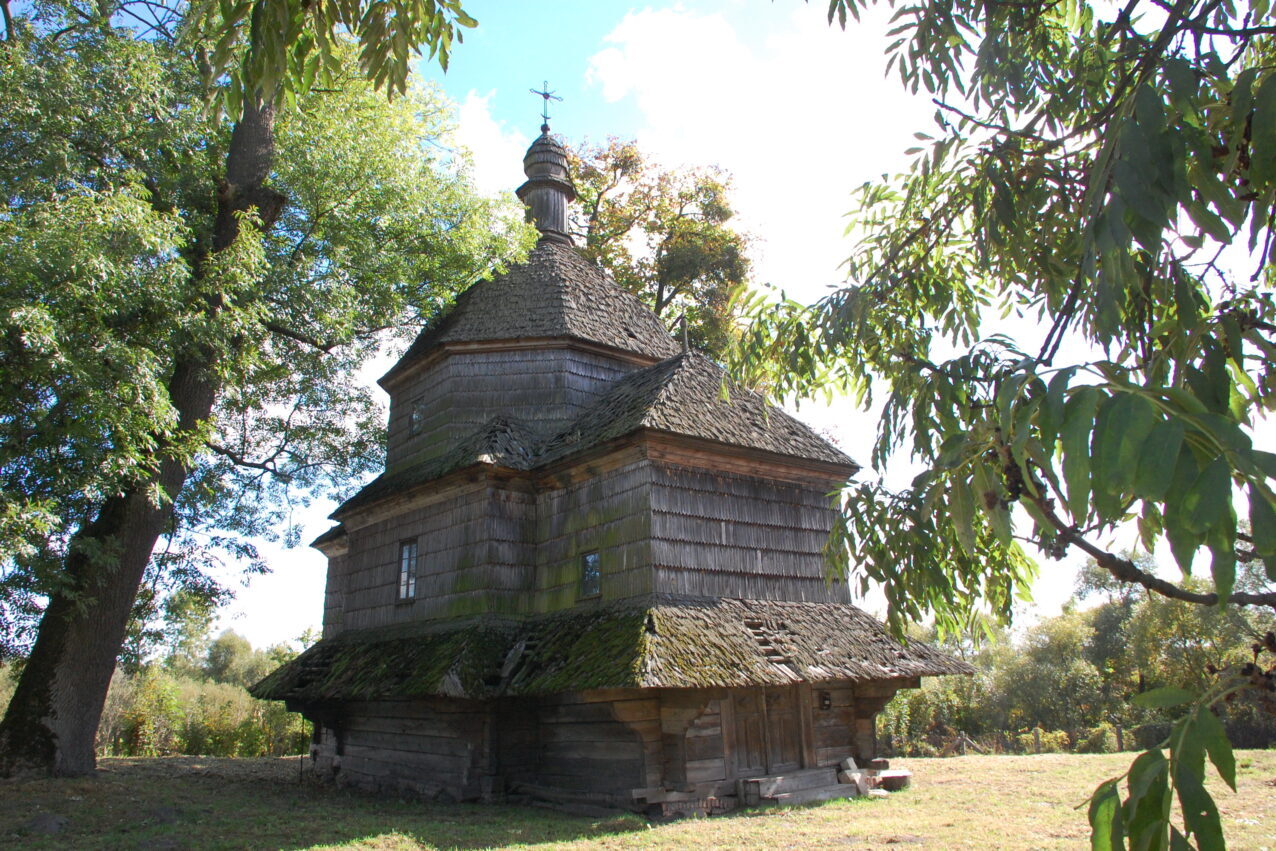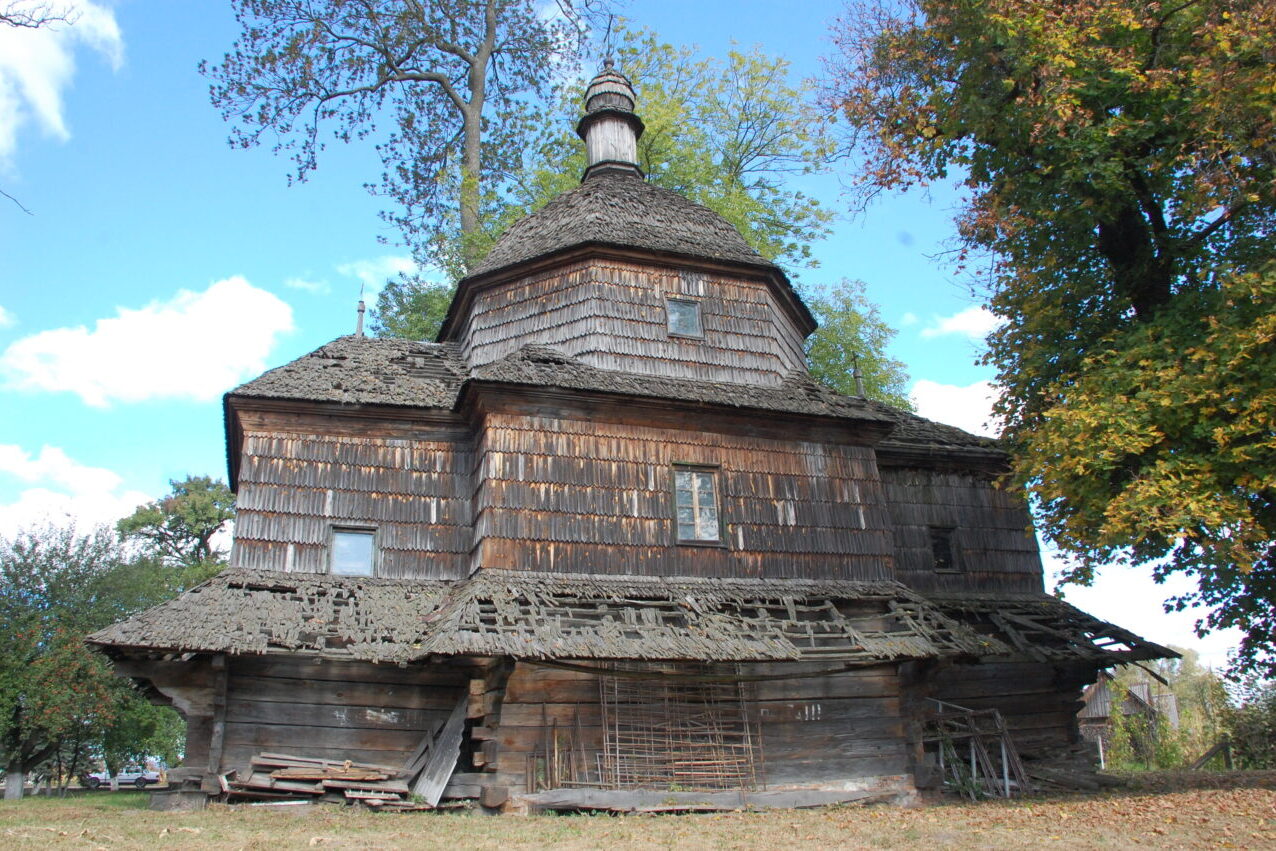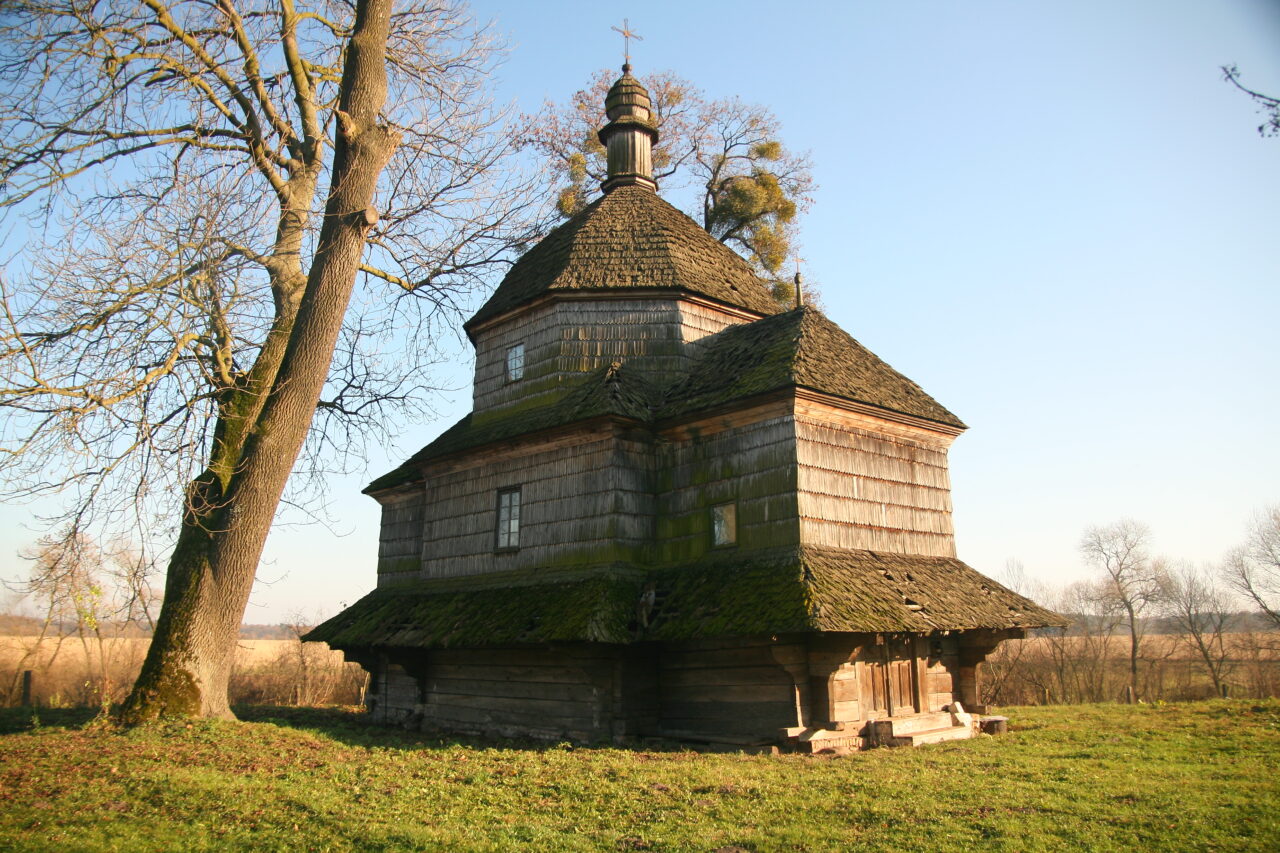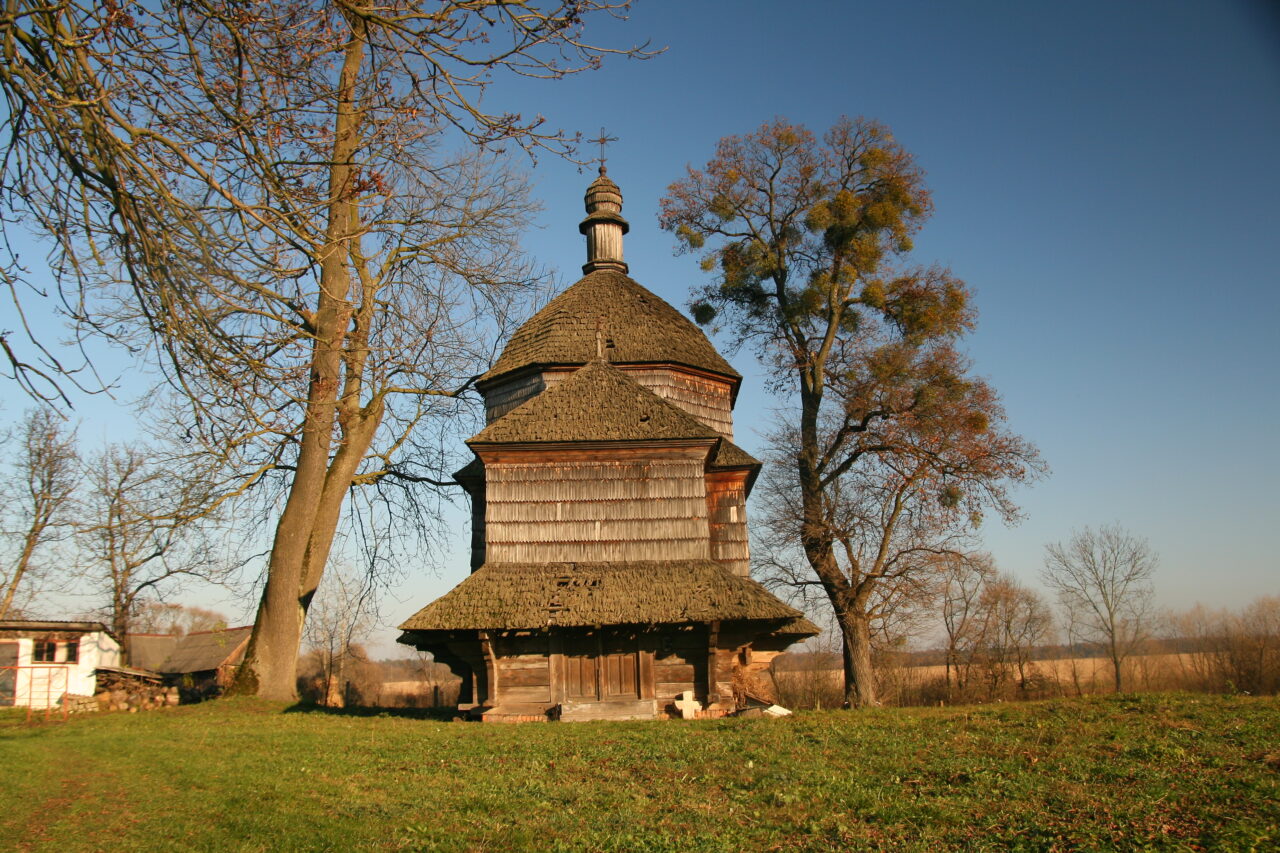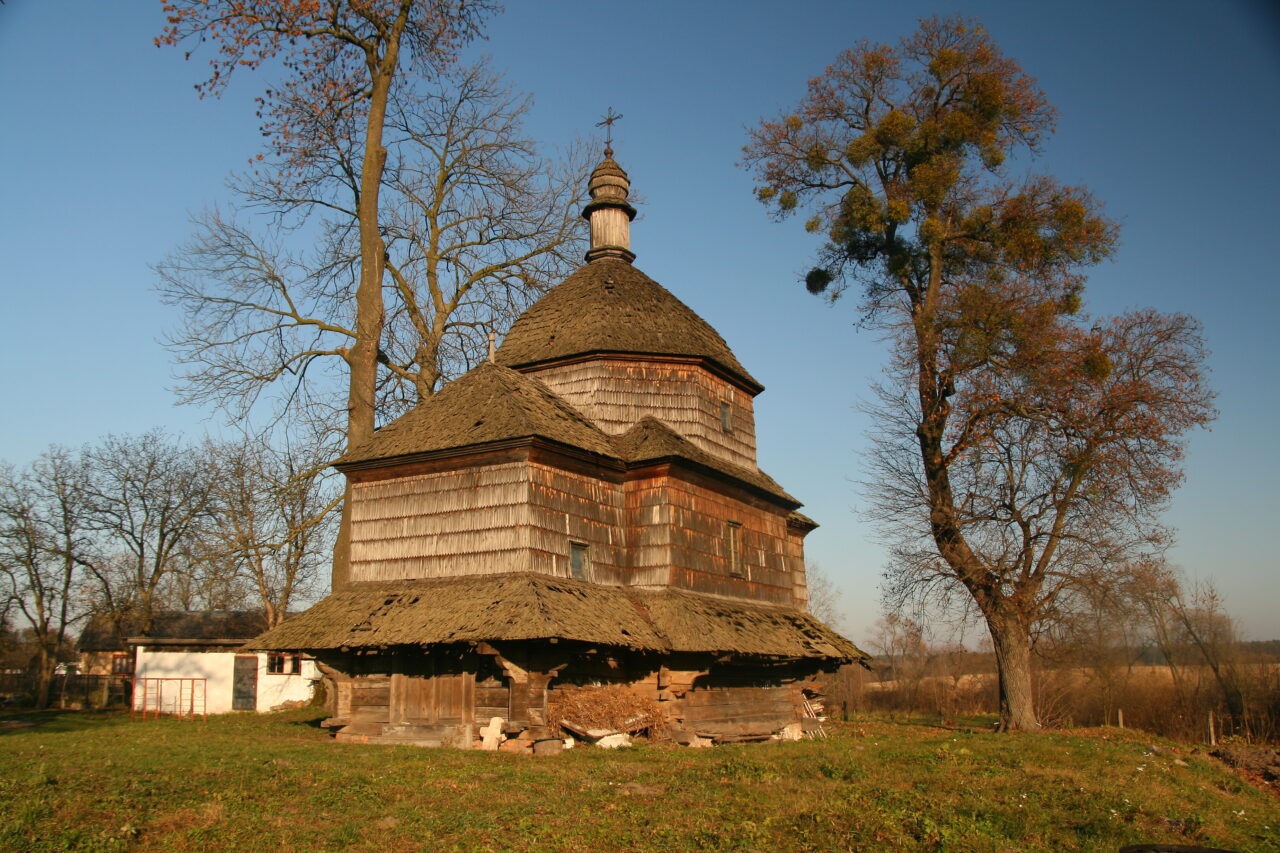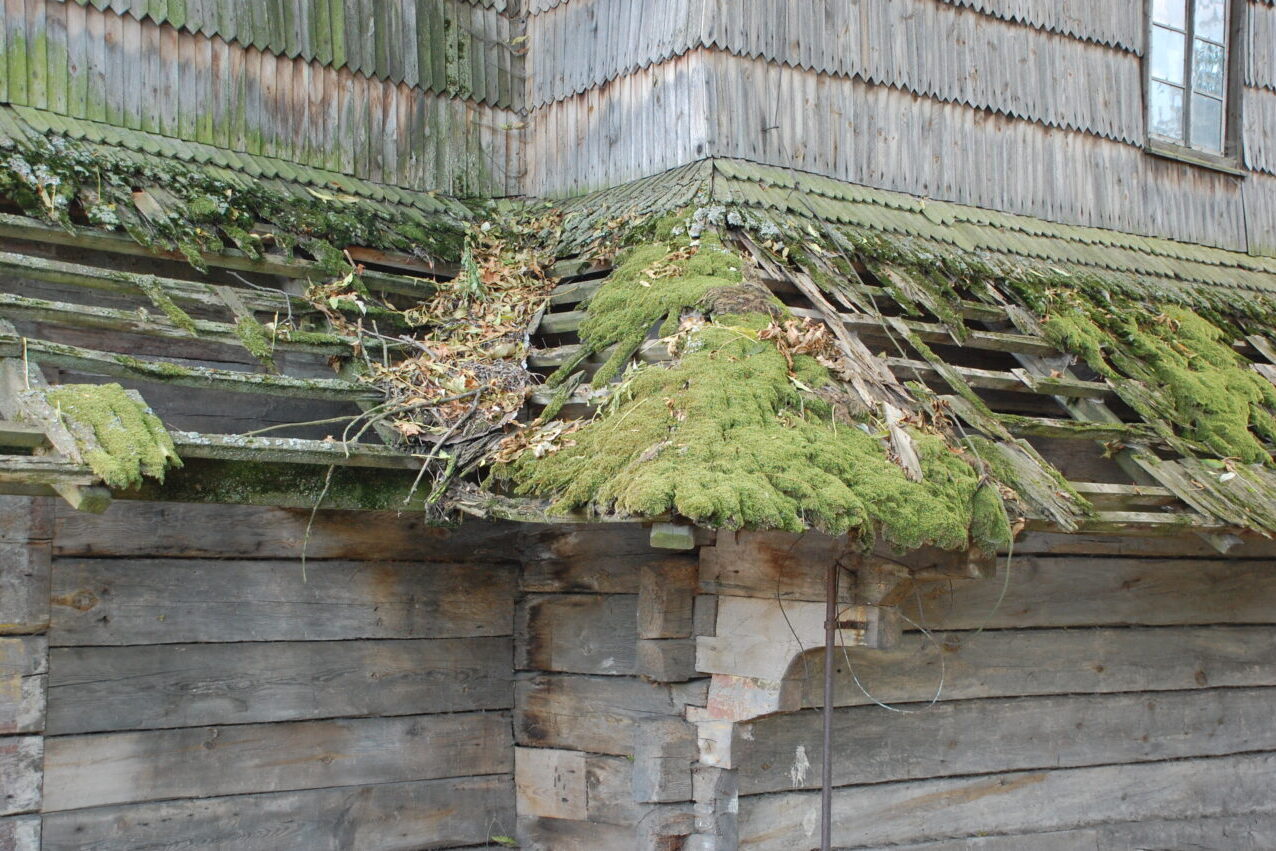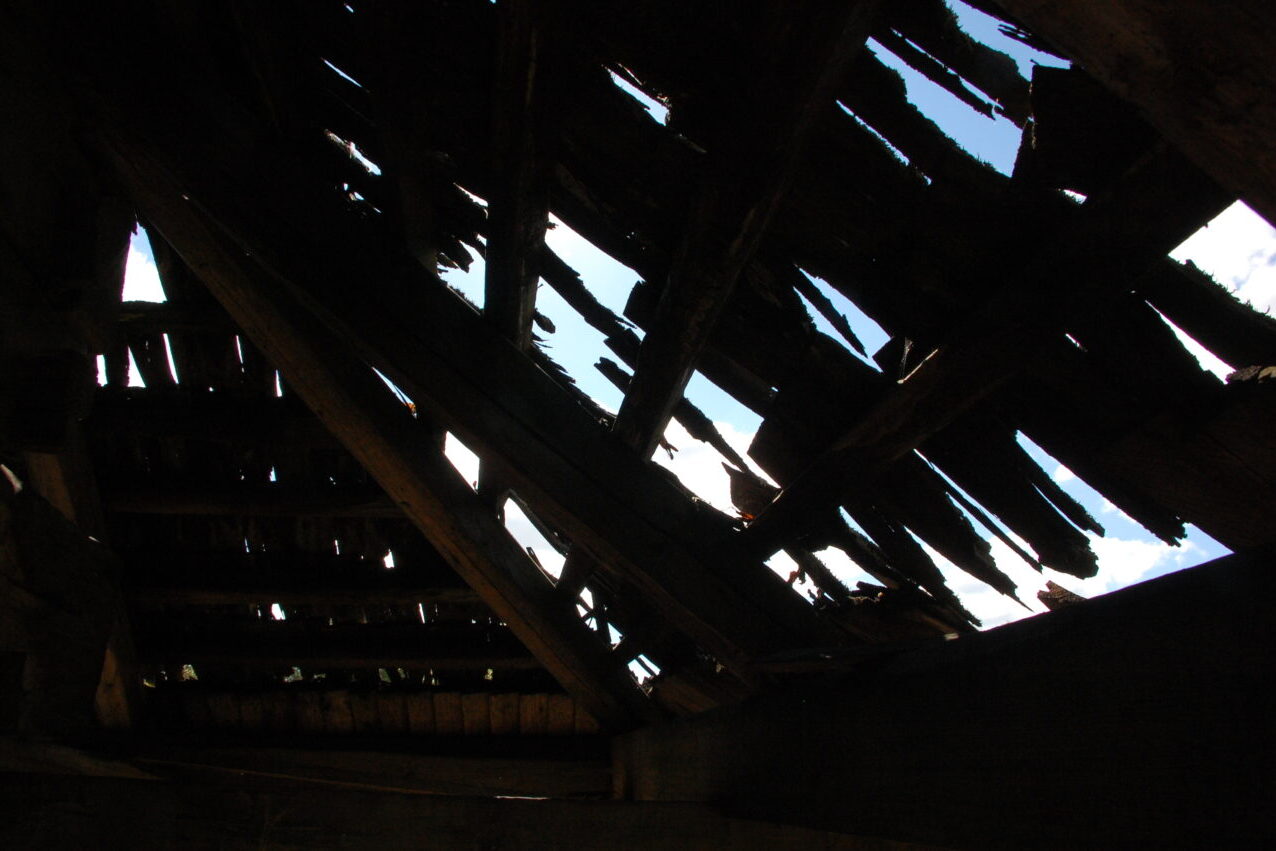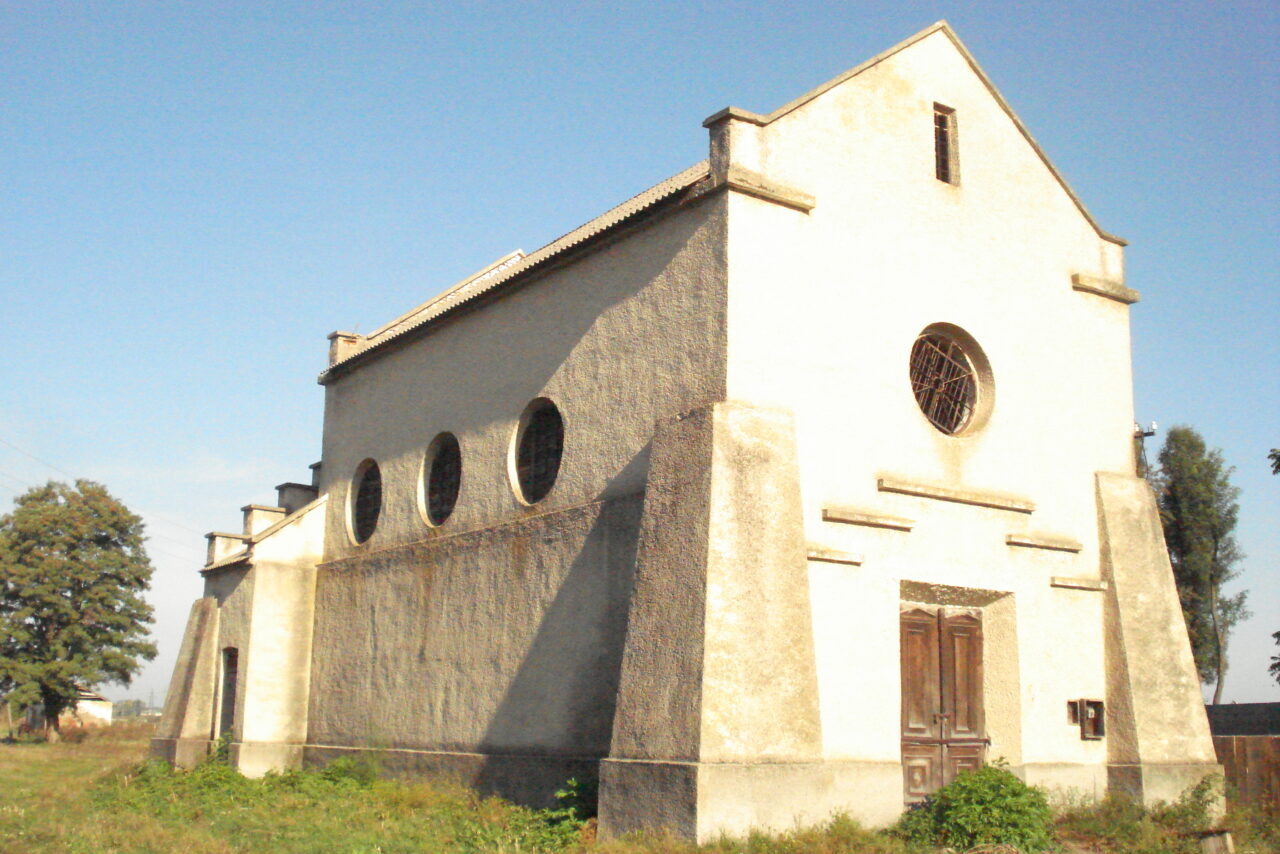Local lore specialists and curious tourists have already silently said goodbye to St. Mykyta’s Church in the village of Derniv near Kamianka-Buzka in Lviv region. They have already mourned the unfortunate fate of one of the oldest wooden temples of Galicia. The church didn’t see those tears, but the weeping of the Nature itself poured under the moldering shingle, froze it with snow in winter. The sun peeked through the bald patches in the roof of the church, as if mockingly throwing some flecks of sunlight into the interior. Look, oldster, life is booming around, but you are no longer a part of it. Everyone left you. Nobody needs you.
But the black clouds that gathered over the beautiful ancient church were blown away by the wind of change. What is the saying in the Bible? “This too shall pass”. This too shall be better.
Hidden among the spreading ancient ash trees, the tiny, imperceptible St. Mykyta’s Church in Derniv is a real benchmark of folk architecture. It is made of pine logs since the north of Lviv region is rich in pines. The ample porch around the perimeter of the church protected the parishioners during the mucky weather. It could protect you from the rain or storm. The horizontal line of the porch harmoniously divides the building.
The three-nave single-domed church has miniature size – only 13.5 by 6.3 meters. It causes a difficulty to choose the correct epithet for it – is it “unusual” or yet “unique”? Rain or shine, hardly ever do we have temples not distorted by subsequent reconstructions. In Derniv, this is exactly the case. No awful verandas, no sacristies – everything has remained as it was in 1666. More than 350 years ago. The date is engraved on the doorway of the building.
The place where the three-nave single-domed beautiful church was constructed is also a wonder. The then architects chose a natural pedestal for it, that is, a hill above the slow Kamyanka River, so that it could be visible from afar.
In the inter-war period, the Greek Catholic Church was patronized by the family of the village landlords Wislocki, Poles by origin. The last liturgy in the church was celebrated in September 1939. After it, the USSR era began. The temple was taken away from the worshippers – the same old story.
The old church was restored with the money raised for the stamps of the Society for the Protection of Ancient Buildings in 1977 (people in their 50s still have to remember such initiatives in their school time). The metal plates were removed, the roof and dome were reshingled as should be. But this “should be” for the shingle means it has to be cleft and dried using the old-fashioned technology. The team of restoration artists headed by architect Borys Kindzelevskyi didn’t have either enough time or resources for it. Hence, they used sawn shingles. The refurbished building was turned into the village museum. And downhill from the church, a kindergarten was built. Usually, ancient churches are surrounded by graveyard crosses, but the church in Derniv was surrounded by carousels, wooden sculptures of fairy-tale characters and sliding boards. For some reason, the non-ideological neighbor didn’t embarrass the Soviet architects: let the museum church stand aside, we need to raise the builders of communism. Besides, the wooden temple didn’t host the museum for long. What’s the point of standing idle if its premises can serve a warehouse of old kindergarten furniture. Hence, the nave became a dumpsite for the deformed lockers.
But over time, the kindergarten itself was abandoned. There were fewer children in the village, there was nobody to ride the carousels near the church, nobody to laugh at the wooden figure of Ivasyk-Telesyk flying south with his swan-brothers. Moreover, a new enormous chuch made of stone was built in Derniv in the 1930s, as if contrary to the urbanization trends and the village extinction. As if the ruthless globalization wings didn’t take the youth from Derniv to the neighboring district centers.
The kindergarten fell into disrepair, the sawn shingles didn’t meet the expectations: in a couple of decades the rooftop of the church became foul and started to leak.
It seemed that the church would fall short of strength to survive to the next refurbishment. But it survived! Although it took six years to prepare the refurbishment project documentation, from 2010 to 2016. And since August 2016, the work was in full swing. The sum of one million hryvnias was raised all together. In April 2018, the church turned into a beauty again. It began to be included in tourist routes. So, things will come right in Derniv. As they should be.

